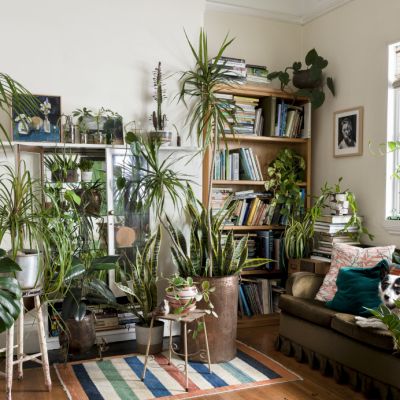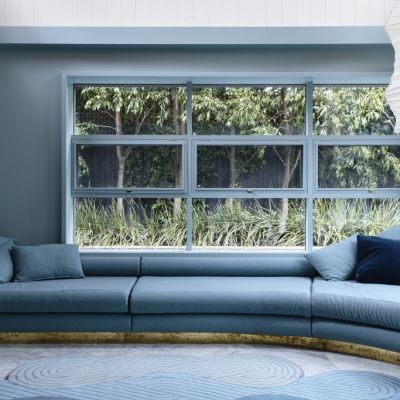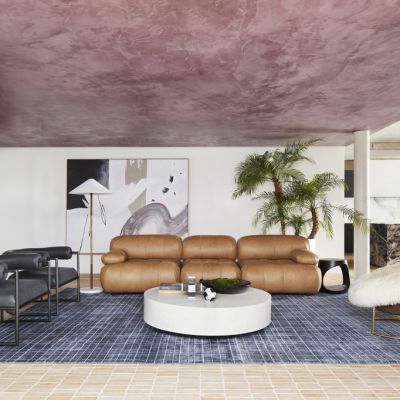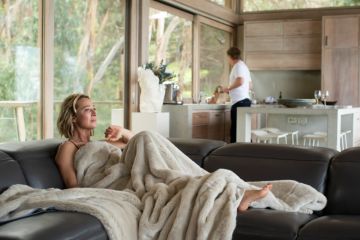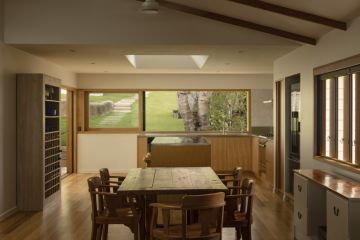Biophilic interior design: The trend that is good for your health
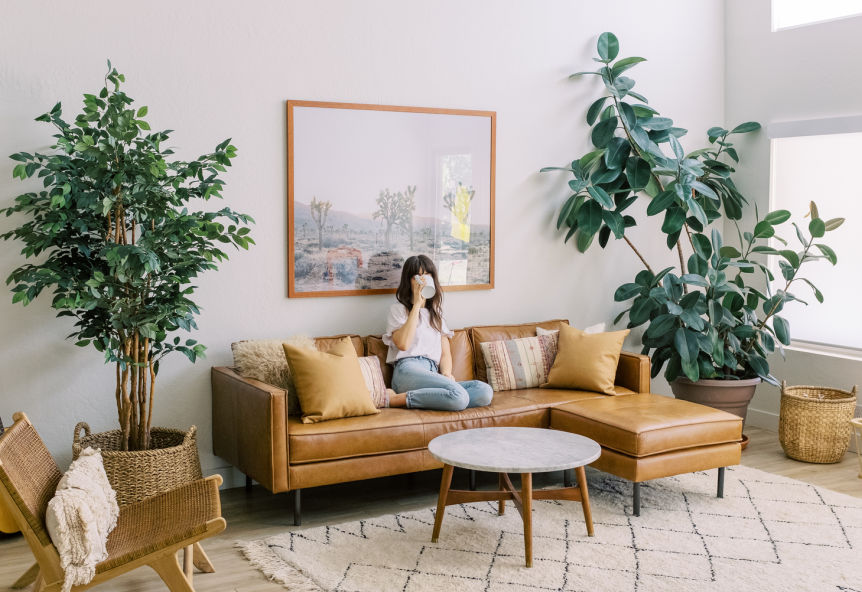
A trend that’s easy to incorporate in the home, is stylish, and is good for you? It seems too good to be true.
Biophilic interior design takes its lead from nature and creates a sensory connection with the outdoors, drawing from nature in all its guises, from natural light and raw materials to floral prints and earthy textures.
“The modern environments many of us live in are at least partially devoid of the wide-open spaces, natural flowing water, sunlight, plant and animal life in which we used to live and thrive,” says psychologist Sabina Read. “Nature soothes, heals, increases natural mindfulness – no app needed – and slows us down in our tracks. It helps build our sense of gratitude and facilitate a level playing field for all humans.”
Here are nine ways to practise biophilic design for a soothing urban sanctuary you’ll never want to leave.
Let in the light
With many working from home, sunlight-soaked interiors are essential for clearing the mind and combatting the blues.
Allow daylight to reach deep inside through skylights and open-plan spaces, and enhance with a white palette, mirrors, and reflective surfaces. Dress your windows in natural materials like nubby linens, timber, and bamboo. Not only do curtains and blinds impart softness or edge, they act as a filter to disperse natural light for a calm, peaceful interior.
Nature’s own
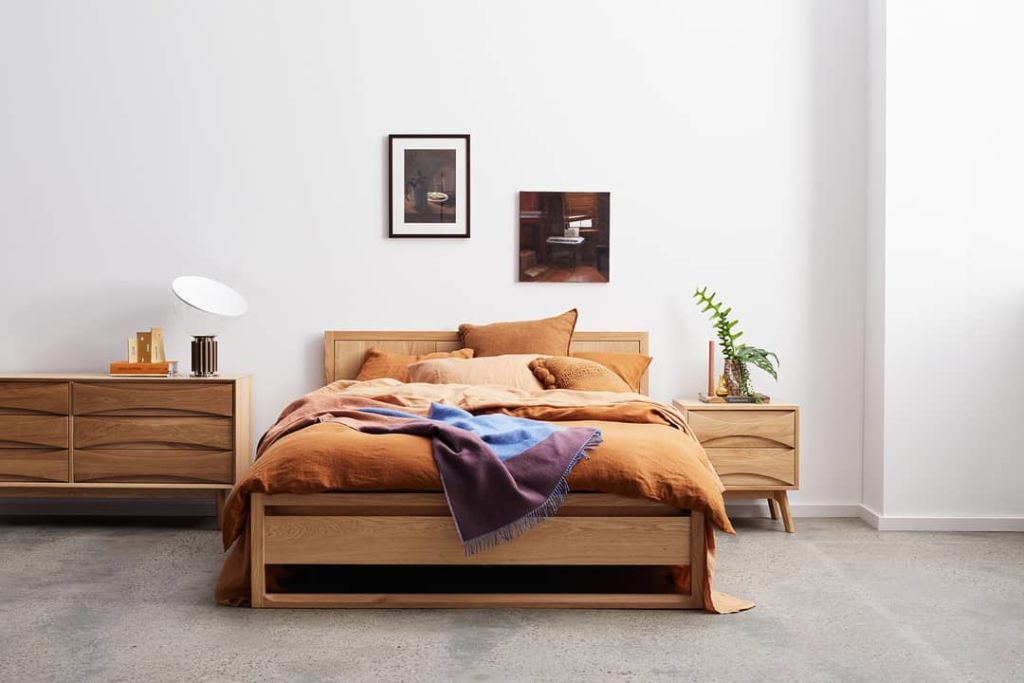
Embrace the intrinsic beauty of raw materials with furnishings in wool, porcelain, concrete, marble, and timber.
Designer Karina Seljak from Seljak Brand creates blankets using recycled wool and says the visual and tactile warmth of natural material is hard to replicate. “Wool is a renewable resource, antibacterial, lightweight, breathable and insulating,” she says. “Designing blankets based on natural phenomena is a relaxing process and outcome.”
Materials like stoneware, clay plaster, terracotta and granite impart an earthy feel to biophilic interiors, while glass, marble and polished stone provide a sleek edge. Experiment with textures, adding rice paper pendants, sheepskin throws to rattan sofas and tactile rugs to timber floors.
Colour me happy
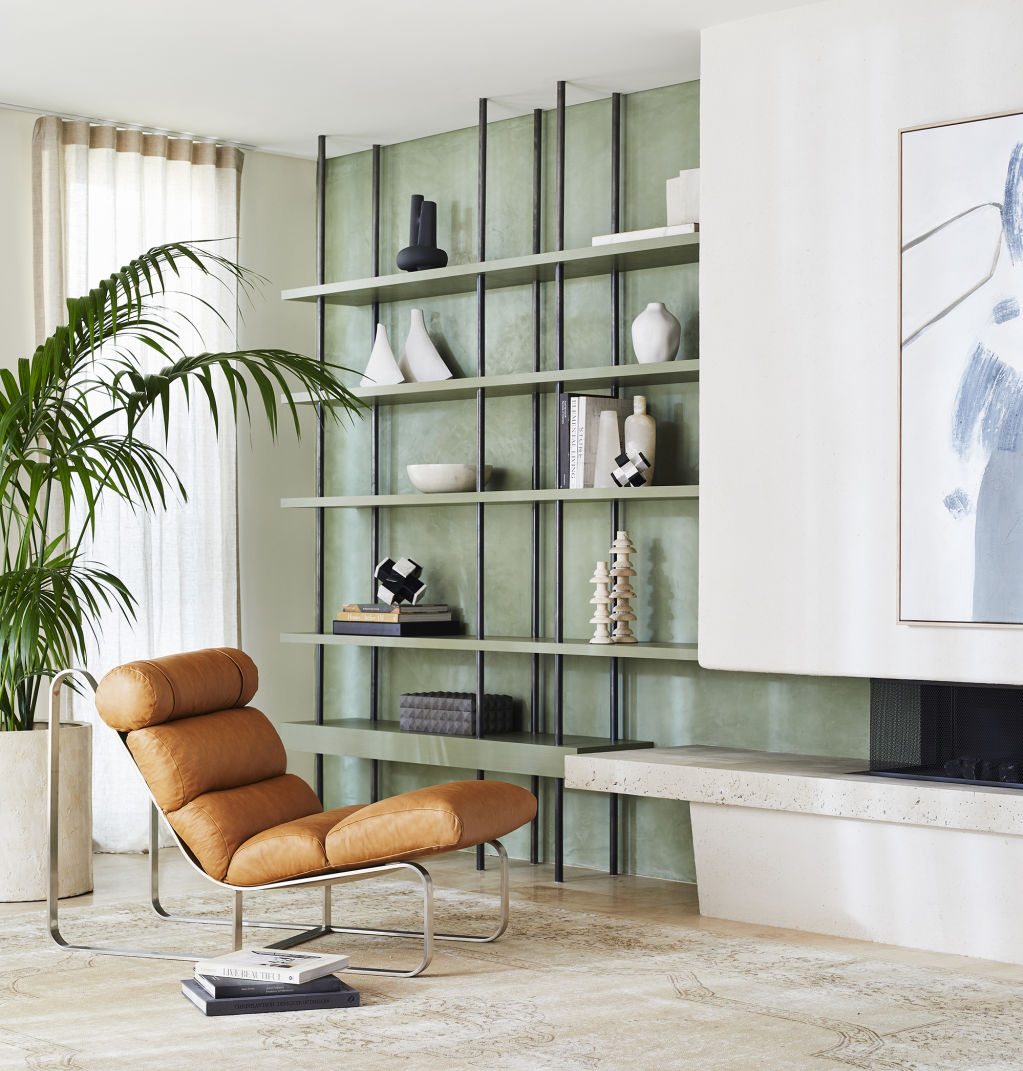
Look for cocooning colours drawn from the natural world, like saturated shades of rust, stone, and teal, or apply muted browns and beiges that lend spaces an organic feel.
“In nature, colours and forms are often intrinsically aesthetically pleasing,” says Seljak, who looks to the Great Barrier Reef and Central Australia for colour inspiration.
Fresh shades of green, the most balancing of colours, is a prominent biophilic colour to embrace. Encompassing a range of moods from stimulating to soothing, it sits at the centre of the colour wheel, making it easy to combine with warm and cool hues.
Wrap your walls
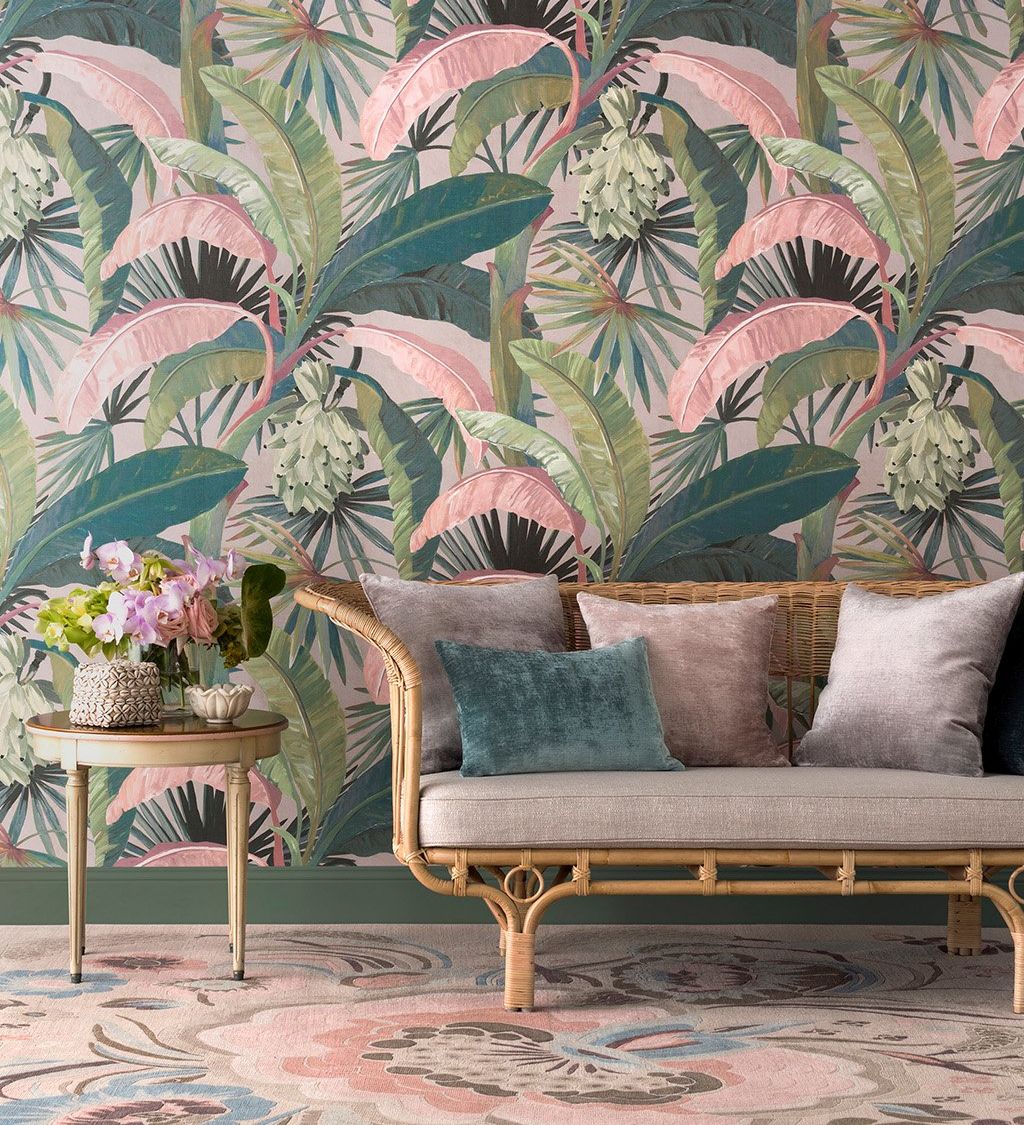
A biophilic-friendly design trend to note is the rise of decorative wallpapers. “They bring texture and warmth, are a good insulator of sound, and make all spaces – large or small – feel cosy,” says Marina Hirst from The Fabric Editors. “Mural wallpaper is fabulous too. It sets a scene and brings the outdoors in.”
Natural art
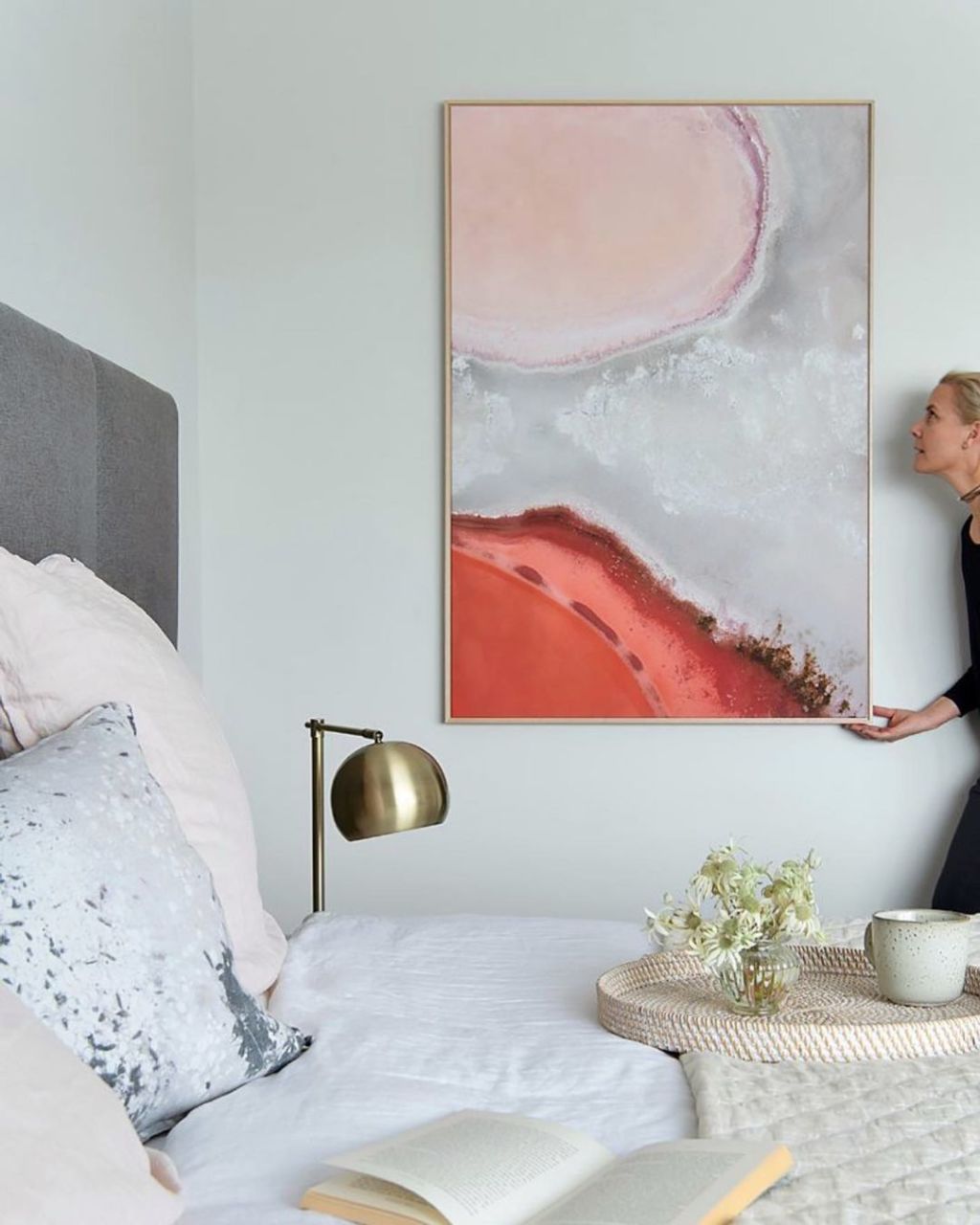
Revive your home and soul with soothing images of botanicals and landscapes. We are wired to connect and respond to images, so choosing natural visuals is a therapeutic choice when it comes to art.
“The beauty of a landscape, with its textures, colour and contours, brings the senses alive,” says photographic artist Jody D’Arcy who captures landscapes and cloudscapes and turns them into artworks and wallpapers. “Landscape photography connects people to emotions, places, and memories,” she adds. “The colours, composition, simplicity and sense of place transport you into nature.”
Raw-crafted furniture
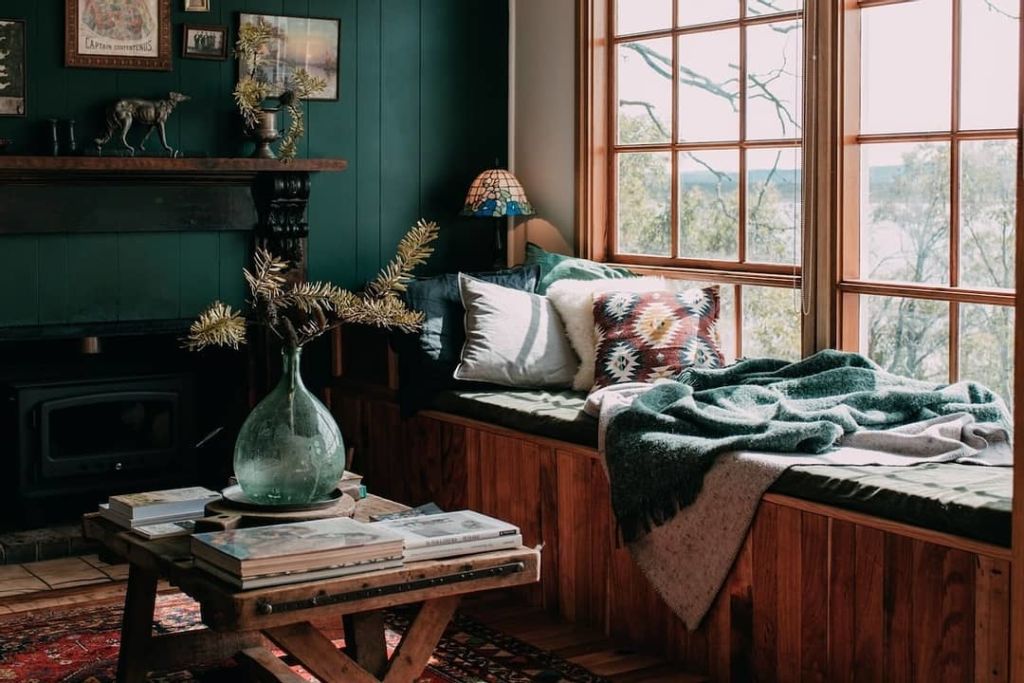
Tactile references to nature heighten a sense of well-being, and handcrafted furniture in organic, undulating shapes has a cocooning effect that is comforting.
“There’s something romantic about using materials that generations of craftsmen have used,” says Anthony Spon-Smith, co-owner and creative director at Coco Republic. “Before there was heavy processing of materials, humans used raw materials and their hands to craft. There’s a quality to anything made with natural materials. It’s subconsciously communicated when you see a piece of furniture made of stone, timber, or natural upholstery.”
Flower power

“Florals simply bring joy,” says Hirst. “They symbolise life, birth and springtime. From a bold sunflower to a delicate peony, flowers resonate with all five senses.”
With their abundant beauty and heady mix of colourful petals and foliage, florals celebrate the joy of spending time in the garden. “There’s something visceral about flowers in the way they convey beauty and positivity,” says Alex McCabe from Kip & Co. “They’re versatile too. Layer floral prints like flowers in a garden or introduce them gently with a flat sheet or cushion that pairs with a colour in your quilt.”
Go green
Of course, the simplest way to embrace biophilic design is with plants. Studies show they reduce stress and anxiety, and by absorbing carbon dioxide and releasing oxygen, they naturally purify the air. Choose verdant, low-maintenance greenery like devil’s ivy, mother–in-law’s tongue, and peace lily that can adapt to a range of lighting levels.
We recommend
We thought you might like
States
Capital Cities
Capital Cities - Rentals
Popular Areas
Allhomes
More
